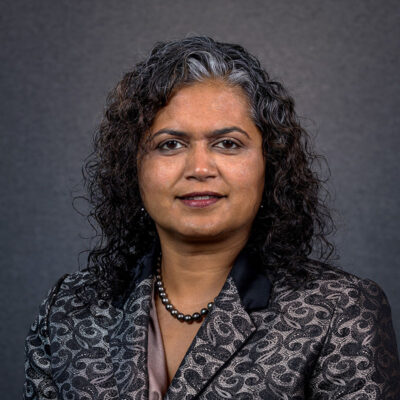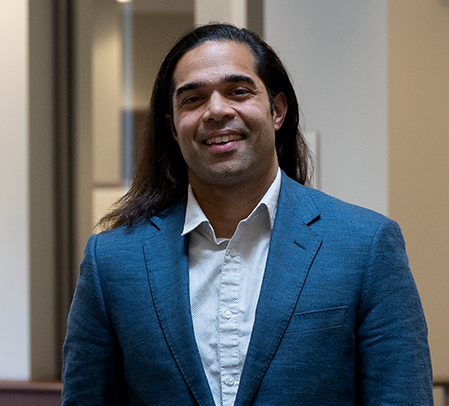AALS sections provide opportunities for law school faculty and staff to connect on issues of shared interest. Each section is focused on a different academic discipline, affinity group, or administrative area. For a full list of sections and information on how to join, please visit www.aals.org/sections.
As part of the ongoing “Spotlight on Sections” series, AALS sat down with the leadership of the Section on Law and South Asian Studies.
By Zaena Ballon
The AALS Section on Law and South Asian Studies promotes the communication of ideas, interests, and activities among members and makes recommendations to the Association on matters concerning law and South Asia.
Chair: Sital Kalantry, Seattle University School of Law
Chair-Elect: Guha Krishnamurthi, University of Maryland Francis King Carey School of Law
What made you get involved with the Section on Law and South Asian Studies? Why did you join the leadership?
Sital Kalantry: My scholarship has focused on India, the largest country in South Asia. I have written on reproductive rights, surrogacy, and courts in India from a comparative and empirical perspective. This is why I was drawn to the Law and South Asian Studies section.


Guha Krishnamurthi: I have always been interested in issues with India in particular, but South Asia more generally, especially in legal matters that affect both the South Asian region and the diaspora. In particular, I write about court structures in various South Asian countries and concerning the diaspora on caste and religious discrimination issues. Professor Kalantry invited me to serve as chair-elect, and it was an excellent opportunity to work on these issues and be part of this broad network of scholars.
What is the section’s leadership structure?
SK: I am the chair, Professor Krishnamurthi is chair-elect, and we have an executive board with four other members.
What kind of work do your members do?
SK: Some members focus some aspect of their scholarship on South Asian countries, while others may not write in the area but are just interested in learning more.
For example, Professor Krishnamurthi is writing on caste discrimination issues in the diaspora. We think that the conversations relating to South Asia relate to what’s happening in South Asian countries and what’s relevant to the diaspora communities in other countries. If you expand it to that, we include things like caste discrimination. And limiting it to those countries, one thing I mentioned is that my work relates to human rights.
We’re also considering how human rights are impacted in India and various communities, which is the subject of my work.
How does your section support the scholarship of your members?
SK: This year, the section created an award for legal scholarship that has significantly contributed to enhancing the study of one or more South Asian countries. With this award, we hope to highlight the work of law scholars who engage with one or more South Asian countries.
GK: Earlier this year, I did a panel that focused on scholarship that many of the panel members had been working on. There’s the panel at the AALS Annual Meeting, but we’ve also organized a session during the year.
What conversations are happening in legal education regarding Law and South Asian Studies?
SK: Despite the similarities in language and legal and political institutions, American law schools do not focus on studying countries in South Asia. India is one of the world’s largest countries and economies. It should be the focus of more comparative engagement. Today’s critical conversations about India are about the state of human rights — particularly those of religious minorities — and freedom of speech.
Seattle became the first city in the U.S. to outlaw caste-based discrimination. Some universities have added caste to their anti-discrimination policies, allowing students, staff, and faculty to report caste bias and prejudice. Do you see these policies as a step toward addressing an “invisible and unaddressed” form of discrimination in America?
SK: The reality is that when immigrants come from another context, some bring the prejudices they learned in their country of origin. An even smaller subset of them might carry out those prejudices in the United States against people from their own country. Much of this prejudice relates to social discrimination that U.S. law does not address or prevent. But when it seeps into contexts such as employment or housing, existing legal rules can be used to prohibit it. We do not have reliable data on the extent of such discrimination, but even one instance of it is unacceptable.
GK: I have written in support of such policies, but as a section, we are committed to addressing and fleshing out these issues from a scholarly perspective, and there are different perspectives.
In the news, this issue was brought to light based on a case involving Cisco Systems and a John Doe plaintiff, claiming that their managers had discriminated against them on the basis of their caste.
That case is still progressing. Thereafter, several women engineers in Silicon Valley alleged that they had been discriminated against based on their caste, culminating in an op-ed in the Washington Post.
From there, there have been some scholarly attempts to understand the amount of discrimination that’s happening in the United States on the basis of caste and what legal remedies may be available for those facing caste discrimination.
At the 2023 AALS Annual Meeting, your section held a program titled “Does the U.S. Constitution Have an Unamendable Core?” What themes did the session address?
SK: The idea was to turn the lens of comparative law back to the United States. Most comparative law scholars in the United States and other countries have focused on what the Global South can learn from the Global North. This panel examined the “basic structure doctrine,” which is the theory adopted by the Indian Supreme Court that the Indian constitution has an unamendable core. Panelists discussed whether such a theory is useful in the American context and, if so, what aspects of the U.S. Constitution would be unamendable by the U.S. Congress.
How do members of your section connect outside of the Annual Meeting?
SK: We recently hosted a Roundtable on caste discrimination after Seattle adopted a resolution addressing caste discrimination. The Roundtable discussed the extent to which existing state and federal laws address caste discrimination and the United States’ related obligations under international human rights law.
What is your vision for the section this year and in the future? What new initiatives, project-based or ongoing, would you like to see as part of the section?
SK: I would like to see this section work to promote engagement with countries in South Asia in the U.S. legal academy and profile the extraordinary work being done by our members. I want to engage people who do not usually work on South Asia.
GK: The section can serve as a network of individuals working in these areas and issues and connect, not just at the Annual Meeting but throughout the year, via online programming, informal Zoom happy hours, or other events.
This cross-pollination can lead to more dialogue, interdisciplinary work, and connections between scholars.
What are the best ways for interested faculty to get involved with this section?
SK: We would love for interested faculty to join our discussion list, attend our main panel at the AALS Annual Meeting, nominate people for the section award, and attend the awards ceremony.